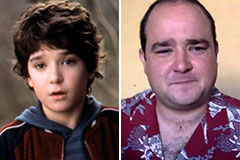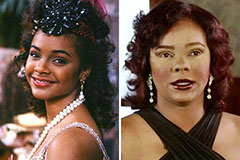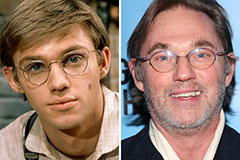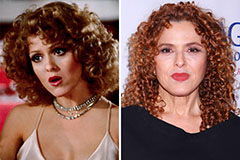When it comes time to renew your skin and reversing the visible signs of ageing, few treatments are as efficient and time-tested such as CO2 laser resurfacing. Here at Dr. Monica Scheel Dermatology we specialize in offering the latest medical and cosmetic dermatology solutions, including laser skin refractive, to help you attain a glowing, youthful appearance.
No matter whether you're looking to repair sun-damaged skin, reduce wrinkles and lines, or simply refresh your face, CO2 laser treatment can be a potent and scientifically proven solution. In this article, we'll look at the ways in which CO2 laser Resurfacing is performed, who is the best candidate, what results can be expected, and how it fares against similar skin rejuvenation treatments.
What is CO2 Laser Resurfacing?
CO2 laser Resurfacing can be described as an ablation laser treatment which precisely removes damaged skin's outer layers to boost collagen production and encourage healthy, new skin development. It uses the use of a fractional CO2 laser that means it targets specific areas of the skin that are using a grid, leaving surrounding tissue intact. This accelerates recovery and reduces time in the hospital.
The treatment is extremely efficient in addressing a variety of issues, such as:
Sun-damaged skin
Fine lines and wrinkles, deep wrinkles
Acne scars
Uneven skin texture and tone
Pores with larger pores
Scars resulting from trauma or surgery
How Does Fractional CO2 Laser Function?
This fractional CO2 laser emits controlled laser pulses which penetrate the skin's surface. These tiny beams generate microthermal zones to trigger the body's natural healing process. As your skin heals it replaces damaged, old cells with fresh, rejuvenated tissues. In addition, the treatment boosts collagen remodeling, which is an important factor that results in the smoother and firmer appearance of your skin.
In contrast to traditional CO2 lasers which ablate the entire surface layer of skin, fractional lasers treat only a "fraction" of skin at once which significantly decreases the time to heal and posing a risk.
Advantages of Laser Resurfacing with CO2
1. Treats Sun-Damaged Skin
Exposure to sun for a long time can lead to pigmentation, wrinkles, rough textures and dehydrated of the skin. CO2 lasers help heal damaged skin from sun exposure by removing the outermost damaged layers and promoting healthy skin renewal.
2. Lowers Wrinkles and Fine Lines
For individuals seeking to get a wrinkle-reducing laser treatment this procedure will provide impressive results. It stimulates collagen production and smoothing out the skin's surface some of the best and most efficient treatment options for wrinkles using lasers available today.
3. Improves the Skin Tone as well as Texture
Discoloration uneven, rough patches and dullness can be improved by treatments for the skin using lasers. Your skin will not only be firmer and smoother, but will appear more even and luminous.
4. It is minimally invasive and has long-lasting Results
Although it's an ablative method, fractional CO2 laser resurfacing is much less invasive compared to older methods, with the majority of patients having results that last many years if they take care of their skin and sunscreen.
The ideal candidates for laser skin Resurfacing
You could be a great candidate for CO2 laser resurfacing in the following scenarios:
You may have moderate to severe facial wrinkles.
You're looking to treat sun-damaged skin or problems with pigmentation.
You've got visible acne scars as well as surgical cuts.
Overall, you're in good health and you're setting realistic expectations.
But, people with darker skin colors should consult with an experienced provider such as Dr. Monica Scheel, as there is a greater risk of hyperpigmentation due to ablative light sources.
What to Expect During the Process
The treatment is typically performed in the clinic under topical anesthesia and sometimes with local anesthesia based on how large the area. Here's a quick overview of what takes place:
Preparation: Your skin will be cleansed and numbing creams are applied.
Method of Treatment Treatment using the fractional CO2 laser is applied to the skin, focusing on damaged cells. The session can last for 30-90 hours, based upon the treatment zone.
Post-Treatment: You may experience swelling, redness, or a sunburn-like sensation for several days. Healing usually takes 5-10 days.
As your skin heals you'll notice smoother, tighter and more even-toned skin.
Recovery and aftercare
Careful aftercare is necessary to ensure the best results and to avoid complications. Here are some basic guidelines:
Maintain your skin's cleanliness and well-hydrated with non-comedogenic, gentle products.
Avoid sun exposure and apply SPF that has a broad spectrum of minimum 30.
Avoid peeling or picking the skin during the time of recovery.
Follow all procedures after the procedure as instructed to you by your dermatologist.
The majority of patients return back to their routines within 7-10 days, though redness could last for a few weeks, just like the appearance of a mild sunburn.
How Many Sessions Are Needed?
One of the advantages in CO2 laser rejuvenation is that significant improvement can be seen in the majority of cases after a single treatment. However, for more severe conditions of the skin, your dermatologist may recommend multiple treatments spaced a few months apart.
Results Things to Expect
Patients usually begin to notice improvements within a week of the skin is recovered. But, the full results particularly related to collagen production can take anywhere from 3-6 months to appear.
The results include:
Visibly less wrinkles
Skin is more youthful and smoother
Improved skin elasticity
Sun and age spots that have faded, as well as sun damage
If you use the correct skincare products and protection from sun, the results can last for many years.
CO2 Laser as compared to. Different Skin-Rejuvenation Therapies
CO2 Laser Resurfacing vs. Microneedling
Microneedling is less invasive and has a shorter recuperation time, however it does not result in the same dramatic changes as CO2 laser treatment for wrinkles and deep scars. Ablative laser resurfacing
CO2 Laser Resurfacing vs. Chemical Peels
While chemical peels can improve surface-level skin concerns however they lack the precision and depth of treatment CO2 laser offers, especially for more severe scars and lines.
CO2 Laser Resurfacing vs. Non-Ablative Lasers
Non-ablative light sources require multiple treatments and offer more subtle results. However, ablative laser resurfacing like CO2 offers more noticeable, long-lasting results in fewer sessions.
Combining CO2 Laser Treatments with Other Treatments
The Dr. Monica Scheel Dermatology, your facial laser resurfacing strategy can be customised in order to boost your overall results. CO2 laser treatments typically are integrated with
Botox in combination with Dysport for dynamic wrinkles
Fillers for dermal use for loss of volume
IPL (Intense Pulsed Light) for pigment correction
Medical-grade skin care to preserve results
Combining treatments allows us to treat a variety of signs of aging one comprehensive approach.
Why should you choose for Dr. Monica Scheel Dermatology for Laser Skin Resurfacing?
With decades of expertise as a specialist in the field of cosmetic dermatology, Doctor. Monica Scheel and her team are specialists of cosmetic skin rejuvenation using lasers. Here's the reason patients from all over Hawaii choose us for their skin rejuvenation:
Certified by the Board with extensive laser training
High-tech CO2 fractional laser technology
Individualized treatment plans based on you skin's type as well as goals
Experienced track record in treating sun-damaged skin as well as wrinkles, scars and other issues.
Our focus is on security, efficiency and complete satisfaction for our patients. No matter if you're seeking just one treatment or a complete skin transformation, our team will assist you throughout the process.
Frequently asked questions
Q: Is CO2 laser resurfacing difficult?
Most patients describe the procedure as being mildly uncomfortable. Anesthesia with numbing agents and localization can be used to lessen discomfort.
Q How long does redness last after an treatment?
Initial redness typically subsides within 7-10 days. Mild pinkness can last for a few weeks.
Q What is the best way to wear makeup following CO2 laser refractive treatment?
You must avoid wearing makeup until your skin is fully healedusually around 10 days post-treatment.
Q: Is the treatment safe for all types of skin?
While beneficial for lighter skin tones however, those with darker complexions are advised to seek consultation with a doctor to determine if the treatment is suitable and discuss possible risks such as changes to the pigment of your skin.
Reclaim Radiant Skin Today!
If you're looking to revitalize the appearance of your skin and return it to a youthful healthy glow, CO2 laser resurfacing might be the perfect match. A leader in laser facial rejuvenation along with facial wrinkle treatments Dr. Monica Scheel Dermatology provides the highest quality of care and advanced technology.
Call us now to schedule a consult and start the journey toward visibly smoother, firmer and more radiant skin.
 Bradley Pierce Then & Now!
Bradley Pierce Then & Now! Lark Voorhies Then & Now!
Lark Voorhies Then & Now! Tahj Mowry Then & Now!
Tahj Mowry Then & Now! Richard Thomas Then & Now!
Richard Thomas Then & Now! Bernadette Peters Then & Now!
Bernadette Peters Then & Now!